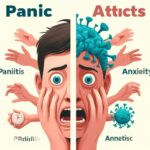Proteins, the complex molecules that are essential to life, often leave us in awe of their diversity and intricate structures. They play a myriad of roles in our bodies, from forming our hair and nails to facilitating critical chemical reactions. But what exactly are proteins, and why is their folding so important to their function? In this article, we unravel the enigma of proteins and explore the fascinating world of their shapes and functions.
Proteins: The Molecular Workhorses of Life
- Amino Acids:
- The building blocks of proteins.
- 20 different amino acids are found in proteins.
- Each amino acid has unique chemical properties.
- Peptide Bonds:
- Formed when the amino group of one amino acid reacts with the carboxyl group of another.
- These bonds link amino acids together, creating a long chain called a polypeptide.
- Primary Structure:
- The sequence of amino acids in a protein.
- Determines the protein’s ultimate shape and function.
The Art of Protein Folding: Form Meets Function
- Secondary Structure:
- Local folding patterns within a protein.
- Examples: alpha helices and beta sheets.
- Stabilized by hydrogen bonding between amino acids.
- Tertiary Structure:
- The overall three-dimensional shape of a protein.
- Formed through interactions between amino acid side chains, including hydrogen bonds, ionic bonds, and van der Waals forces.
- The folded structure is essential for the protein’s function.
- Quaternary Structure:
- Some proteins consist of multiple polypeptide chains.
- These chains come together to form a functional protein complex.
- Examples: hemoglobin and DNA polymerase.
Misfolding and Disease: When Proteins Go Rogue
- Protein Misfolding:
- Occurs when a protein fails to fold into its correct shape.
- Can lead to loss of function or toxic aggregation.
- Protein Folding Diseases:
- Misfolded proteins can cause a variety of diseases.
- Examples: Alzheimer’s, Parkinson’s, and Creutzfeldt-Jakob disease.
- Chaperone Proteins:
- Assist in the folding process and help prevent misfolding.
- Can also help refold misfolded proteins.
Conclusion
Proteins, life’s molecular workhorses, are fascinating in their complexity and diverse functions. Their unique shapes, determined by their amino acid sequences, are vital for their proper functioning. However, when proteins misfold, they can lead to severe diseases. As we continue to study proteins and their folding, we can unlock new insights into their roles in health and disease, paving the way for novel treatments and a deeper understanding of life itself.















